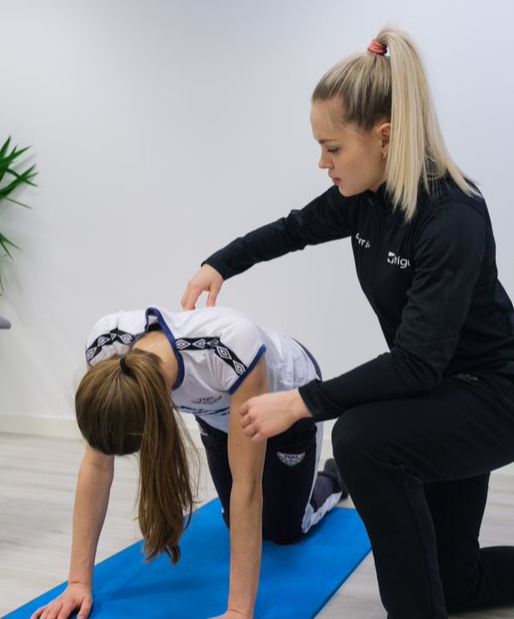
Knee osteoarthritis
Date: 11/04/2021Knee osteoarthritis is a joint disease where the cartilage in the joint is gradually reduced. There is an imbalance where the breakdown is greater than the build-up. Osteoarthritis is often seen as a sign of aging as the risk of developing the disease occurs most from the age of 45-50 and upwards. Excessive load or wrong loads are often related to the breakdown. Obesity, genetics and previous injuries (such as cruciate ligament damage) can also contribute to increased osteoarthritis. Cartilage needs load and movement in order to be nourished and built up. A reduced level of activity therefore leads to a weakening of the cartilage, in addition to weaker muscles around the joint. Poor coordination and reduced strength in the muscles around the knee mean that many people experience the knee as unstable and that “the knee is failing”.
Typical symptoms of knee osteoarthritis are stiffness and pain. It usually starts with pain under strain, for example when going down a flight of stairs. Many people eventually experience morning stiffness, pain and stiffness when they have been at rest or when bending over, or pain when straining over time. Sometimes the knees become swollen and creak with movement.
There is currently no treatment that can cure cartilage reduction, but we know a lot about what can reduce pain and stiffness associated with knee osteoarthritis, so that you can function well and do most of what you want to do.
Exercises and physical activity are the measure that, according to research, gives the best effect for managing knee osteoarthritis. You can choose between strength training, motor skills and physical activity such as walking, cycling and running. But since you should keep at it over time, you should choose something that you like or at least think is okay to implement.
Activity can have two beneficial effects on knee osteoarthritis. Firstly, movement of the knee joint will lead to increased “lubrication” of the joint. This will be beneficial for both the cartilage and other parts of the joint. Secondly, some activities can help the muscles become stronger and can stabilize the joint better. Other activities contribute to better muscle interaction and coordination of muscles around the knee joint and surrounding joints (hips, ankles, etc.). Both parts mean that the joint surfaces receive a more favorable and more balanced load.
Osteoarthritis has also been called (and is still called) “wear and tear”. It is a misleading term as it is not a question of the cartilage being worn by stress (quite the contrary). Many people are afraid to move because of this explanation.
Research also shows that for those who have too much body weight, weight reduction can be effective because the load on the knees is reduced. Painkillers can help you to do activities that contribute positively to manage knee osteoarthritis. You should consult with your doctor about the use of painkillers and in any case never take more than the maximum dose.
Many people think that surgery is the solution for knee osteoarthritis, and they just go and wait to have their “knee replaced”. But the fact is that only a few will benefit from surgery, and that solution should only happen after trying training first.
During surgery, all or part of the knee joint is replaced. After the operation, extensive training and rehabilitation await. If you carry it out in a good way, many people experience that they lead a new life with less pain and that you can do activities you haven’t done for a long time. But remember that most people will be able to get the same experience with good training without surgery.
If you are wondering whether you have knee osteoarthritis, you can download the Trigo app to read more about knee osteoarthritis and perhaps try one of our recommended routines. Or you can contact your doctor or physiotherapist to get it clarified.